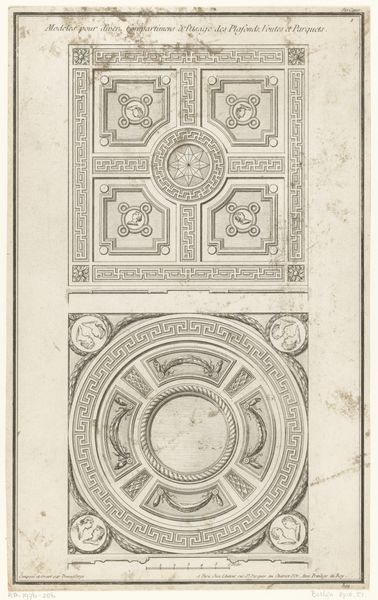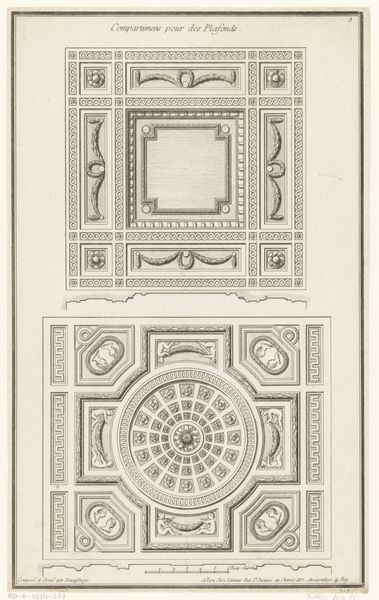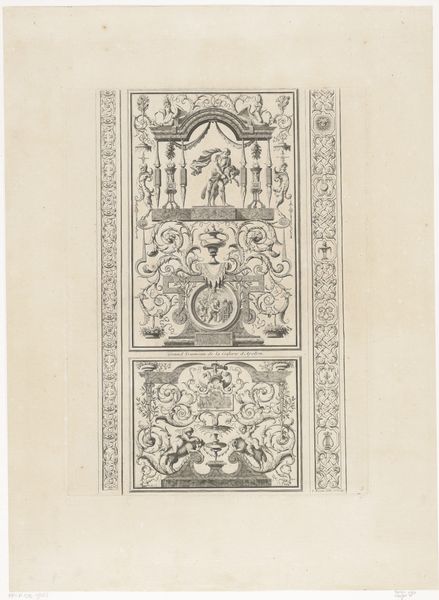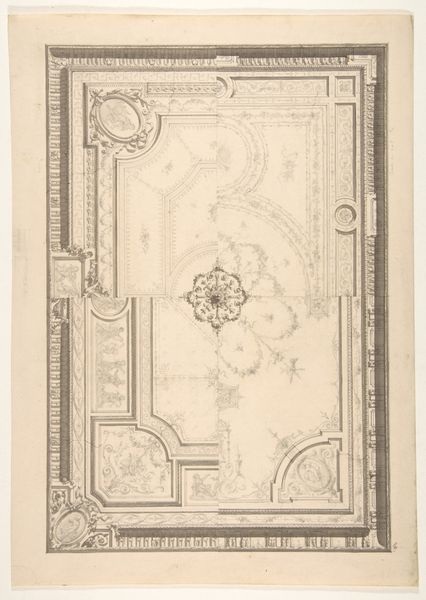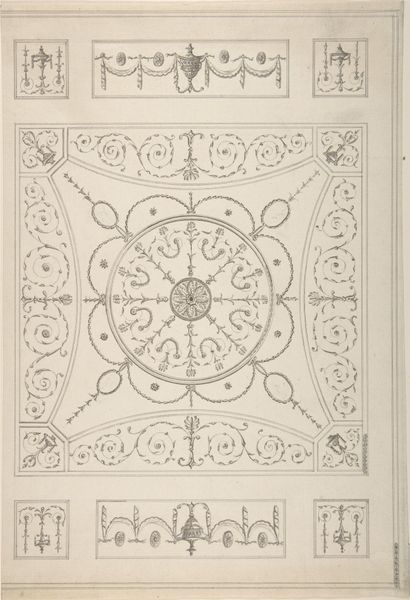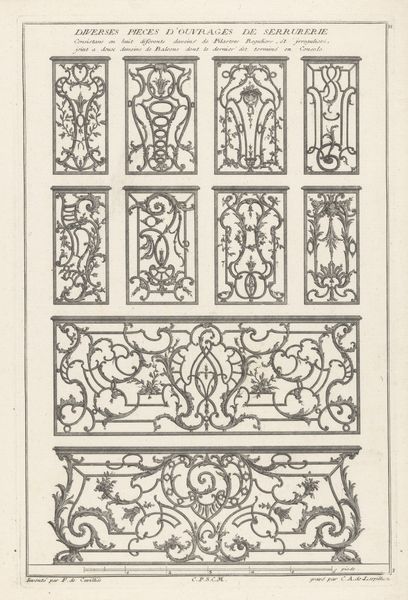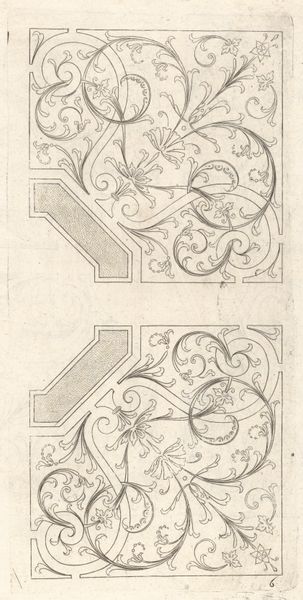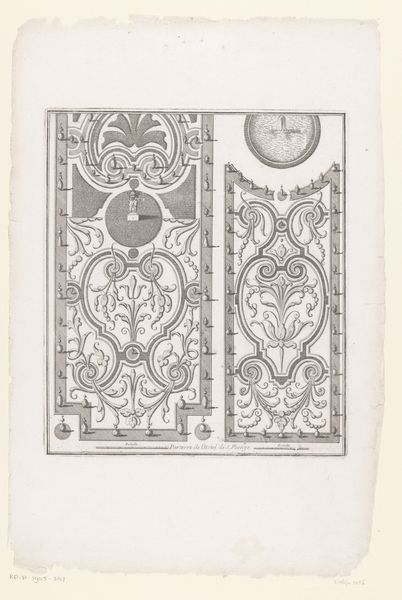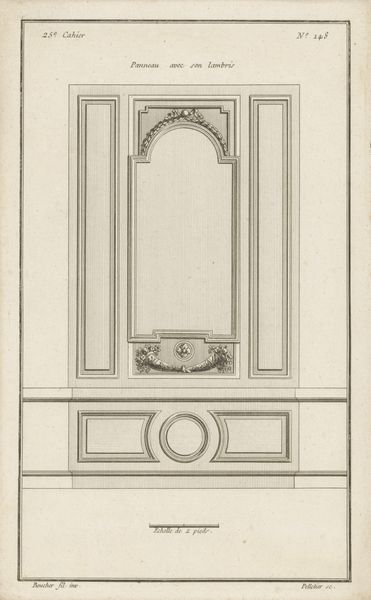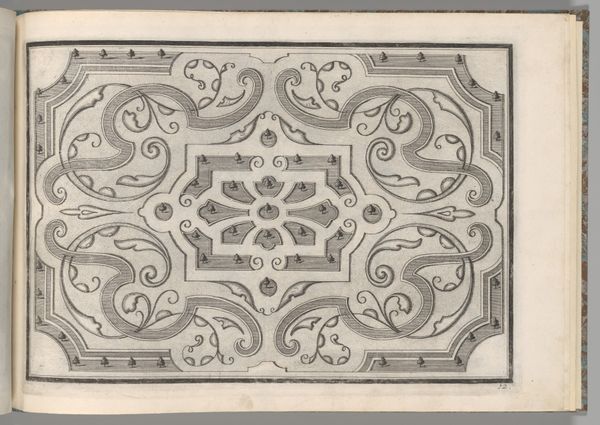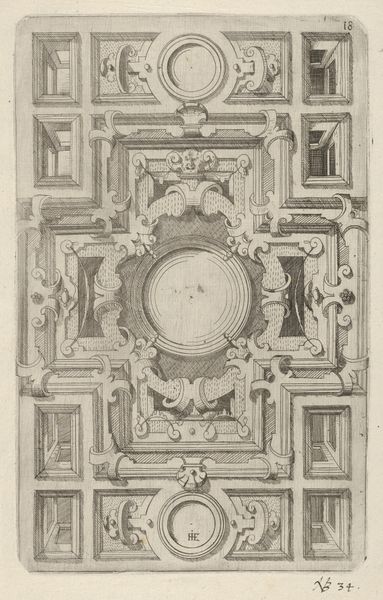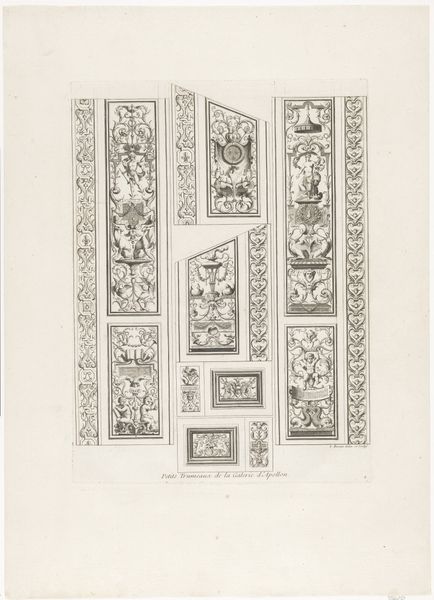
drawing, print, engraving, architecture
#
drawing
#
neoclacissism
# print
#
classical-realism
#
geometric
#
line
#
decorative-art
#
engraving
#
architecture
Dimensions: height 354 mm, width 217 mm
Copyright: Rijks Museum: Open Domain
Editor: Here we have Jean François de Neufforge’s “Plafonds met de zon, figuren en medaillons” from 1763, currently held at the Rijksmuseum. It's an engraving and drawing of ceiling designs. What strikes me most is the precision and detail, but also how repetitive the patterns are. How do you approach a piece like this from a formalist perspective? Curator: Precisely, the repetition and meticulous linework are key. Let’s consider the formal structure. Notice how Neufforge uses geometric shapes - circles, squares, rectangles - to organize the designs. How does this geometric framework affect your perception of the overall composition? Editor: I see that the geometric shapes provide a sense of order and balance. It almost feels like a mathematical equation brought to life. But is that all there is to it? Curator: Not at all. Observe the intricate details within each shape. The contrast between the rigid geometry and the delicate, flowing figures and ornaments creates a visual tension, a dialectic. The radiating lines emanating from the sun motif, for instance, create a dynamic center point. Consider also the interplay of positive and negative space; the lines themselves define form, but the spaces between them are equally important. Do you notice how the line weights differ across the print? Editor: I do, now that you point it out. Thicker lines delineate the primary shapes, while thinner lines are used for finer details, creating a sense of depth. What does this deliberate choice accomplish? Curator: It directs the eye, establishes a hierarchy within the composition, and reinforces the clarity of the overall design. The varying line weights contribute to the piece’s legibility. Consider also the principle of “horror vacui”—the fear of empty space. Despite its meticulous organization, Neufforge fills nearly every available area with intricate patterns. Editor: So, beyond just decoration, these elements all work together to establish a carefully constructed visual system? Curator: Precisely. Formal analysis reveals how Neufforge’s mastery of line, shape, and composition elevates what could be mere architectural diagrams into works of art in their own right. What initially appears repetitive reveals, upon closer inspection, subtle variations and carefully considered arrangements. Editor: I never considered that level of structural complexity in what seemed like a purely decorative piece. I now see so much more, thanks to the close examination. Curator: Indeed, formalism is more than meets the eye, opening up art through critical inspection.
Comments
No comments
Be the first to comment and join the conversation on the ultimate creative platform.

